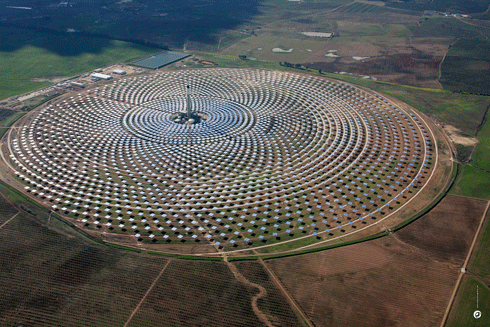
|
Published: 9 March 2011
Curbing IT’s appetite for energy
The information technology (IT) sector’s phenomenal growth and appetite for energy have produced a bulge in its carbon waistline. It’s not a good look when the world is warming at a rate unprecedented in recorded history. Just how big is the IT sector’s footprint in Australia?

|
|
Cloud computing and virtualisation can optimise spare capacity in a system or network, reducing hardware requirements and cutting energy use. Credit: istockphoto
|
The ICT (information and communications technology) industry continues to make quantum gains in processing power while improving its energy efficiency – measured in Floating Point Operations Per Second (FLOPS)1 per watt. But the sector’s burgeoning growth more than negates the savings achieved through increased efficiency.
SMART 2020, a 2008 report produced by The Climate Group on behalf of the Global e-Sustainability Initiative (GeSI), claims the ICT sector could increase its emissions offsets by a factor of five, through helping facilitate emissions reductions in other industries.
However, British environmentalist and author Mr Jonathon Porritt has said that this claim is ‘quite something’ given that emissions from IT are set to balloon from three per cent of total global emissions in 2009 to six per cent by 2020. Mr Porritt put his views in a foreword to another report, Green IT: The Global Benchmark, commissioned by Japanese ICT giant Fujitsu and published in 2010. He noted that this later Fujitsu report ‘provides an incredibly helpful, euphoria-dispelling reality check.’
The report was authored by Australian green ICT expert, Mr Graeme Philipson, Research Director of Sydney-based sustainability consultancy Connection Research. Mr Philipson says that while the application of green ICT to other industry sectors will undoubtedly yield substantial offsets in emissions, the SMART 2020 report’s best-case scenario of a 5-fold offset is unrealistic given the projected increase in the ICT industry’s share of global carbon emissions.
The Fujitsu report was one of the first to employ Connection Research’s Green IT Maturity Index, originally developed in collaboration with RMIT University in 2009. Fujitsu has since adopted the improved 2010 version across its global operations. Mr Philipson hopes the index will become the global benchmark for assessing green IT progress.
‘We surveyed 500 organisations in four countries – the UK, the US, India and Australia – on the basis that the more we surveyed, the better the data,’ he explains. ‘We asked each organisation 100 questions to rank its progress in five defined areas of green IT, across the range of its operations. We then calculated the average for the 500 companies, which yielded the index.’
The five areas in the Green IT Maturity Index are:
-
green IT lifecycle (procurement and disposal)
-
end-user IT efficiencies
-
enterprise and data centre IT efficiencies
-
use of IT as a low-carbon enabler
-
effectiveness of Green IT measurement and monitoring.
The average Green IT Maturity level for the 500 companies surveyed in the Fujitsu report is low – just 56.4 on a 100-point scale. The best-performing country was the UK, with an overall Green IT Readiness Index of 61. The US was next with 58.6, then Australia (53.9), which was penalised for its low level of measurement. India was fourth, with a score of 52.
The report concluded that ‘there is consistently very low performance in the metrics that enable green IT to be properly measured and monitored, and environmentally unsound IT procurement and disposal practices remain widespread’.
Greenpeace International recently ranked Fujitsu third overall – behind Cisco and Ericsson, but ahead of Google – among international ICT companies on its Cool IT Leaderboard. Greenpeace’s Cool IT Challenge, launched in 2009, calls on ICT companies to ‘innovate, mitigate their carbon footprints, and advocate for significant policy changes in the mutual interest of business and the climate’.
Mr Philipson also wrote a recent Connection Research report for the Australian Computer Society entitled Carbon and Computers: The Energy Consumption and Carbon Footprint of ICT Usage in Australia in 2010. He says it is the first time anyone has attempted to calculate a definitive carbon footprint for the industry in Australia – which his best estimate puts at 2.7 per cent of national emissions. This figure reflects energy consumption by computers, air-conditioning and ancillary equipment, but excludes embodied energy – the energy consumed in manufacturing and transporting IT equipment.
‘I’ve seen a study that suggests that more than half the carbon cost of a laptop is accounted for by its manufacture, but it’s not included in any carbon targets in any jurisdiction, because it’s impossible to measure accurately,’ Mr Philipson explains.
Apart from the quick energy-use cuts that can be made by reducing standby power, current trends towards cloud computing and virtualisation offer further savings.
Cloud computing is a concept for IT architecture, in which all IT applications and data are kept on ‘virtual servers’ on the internet. Virtualisation consolidates multiple specialised applications – formerly run on dedicated servers – on a single server and storage system. The Commonwealth Bank, Westpac, Visy and Komatsu are among large Australian companies that have already committed to cloud computing, and The Royal Australian College of General Practice plans to provide GPs with cloud-based e-health applications.
CSIRO is working with National Information and Communication Technologies Australia and Microsoft to implement Microsoft’s Azure cloud-computing facilities through the National Computational Infrastructure at the Australian National University. The aim is to develop systems to help the Australian ICT industry make wider use of cloud computing.
CSIRO is using virtualisation as part of its energy-saving consolidation of 60 computer rooms spread around Australia into a single ‘green’ data centre in Canberra. This makes use of the 95–98 per cent spare capacity that most corporate servers have available at any one time.
Interviewed by Computerworld magazine, CSIRO’s Director of Strategic Planning for IT Infrastructure and Science Support, Mr Peter Czeti, commented: Applications don’t like being away from their data by 2000 km or so, so that’s where the virtualisation is creeping in’.
Virtualisation requires less equipment, because centralised servers are run at 70–80 per cent of capacity; individual servers typically run at only 20–30 per cent of capacity.
‘The disadvantage is that [virtualised IT solutions] don’t provide the power savings you might expect,’ notes Mr Philipson. ‘Organisations usually use virtualisation to reduce their hardware requirements, rather than to save energy.’ He believes more work is required to measure and monitor the energy savings brought by virtualisation and cloud computing.
Ancillary equipment – particularly air-conditioning – accounts for around half the energy consumed by major data centres. Mr Philipson says that in cool areas close to renewable energy sources such as hydro or wind power, say in Tasmania or Jindabyne in NSW, clustering data centres would slash their emissions.
|
The CSIRO GPU research cluster operates Australia’s ‘greenest’ supercomputer, which is powered by Graphics Processing Units (GPUs). The supercomputer ranks 13th on an internationally recognised list of the world’s 500 fastest and most energy efficient supercomputers – the Green500 List.2 |
GPUs speed up data processing by allowing a computer to massively multi-task through parallel processing. GPU-based supercomputers are 2–10 times as energy efficient as regular CPU (central processing unit) supercomputers, completing calculations around 10–100 times faster. GPUs are also much cheaper to purchase and occupy a fraction of the rack space, which also reduces cooling and data centre costs. |
Recently upgraded by Xenon Systems, the CSIRO GPU cluster, located in a data centre in Canberra, achieved a speed of 52.55 TeraFLOPS (trillion Floating Point Operations Per Second) at an energy efficiency of 555.5 MegaFLOPS per watt. This means it can perform 55 550 000 000 calculations for the equivalent power consumption of a 100 W incandescent light. |
Dr John Taylor, CSIRO’s Computational and Simulation Science leader, says energy efficiency and value for money were big draw cards for the organisation. |
‘The high-performance computing industry has reached an energy wall, where the cost of operating supercomputers is about to exceed the purchase cost: primarily due to energy costs. The current focus in the high-performance computing industry is now very much on reducing the energy used to perform computations,’ says Dr Taylor. |
‘We’re solving big national research problems at CSIRO, particularly in climate and environmental science, so it’s important that we focus on energy efficiency for CSIRO computers used to support computational and simulation science.’ |
Scientists using the GPU cluster have already seen a dramatic improvement in IT performance in a range of research projects, from 3D image reconstruction and analysing genetic data in wheat breeding experiments, to modelling interactions between nutrients and plankton in the ocean, and investigating materials science and physics problems. |
GPU supercomputers enable researchers to carry out data-intensive modelling work in areas such as materials science. |
1 The FLOPS unit is a measure of the performance of a computer per watt of energy consumed. FLOPS indicate how many mathematical operations involving decimal fractions a computer can handle per second.
PCs are measured in millions of flops (megaflops), mainframe computers in billions of flops (gigaflops), and super computers in trillions of flops (teraflops).
2 www.green500.org/lists/2010/11/top/list.php



